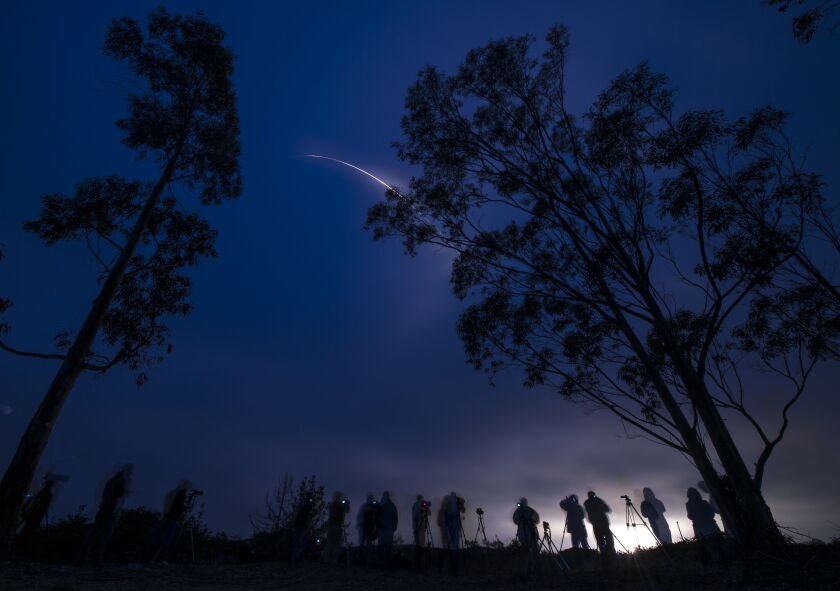VANDENBERG AIR FORCE BASE, Calif. — A NASA satellite lifted off early Saturday with the hope it will transmit data that will help the world do a better job of preparing for floods and droughts.
The satellite is on a three-year mission to track the amount of water locked in soil, which may help residents in low-lying regions brace for floods or farmers get ready for drought conditions.
The Delta 2 rocket carrying the Soil Moisture Active Passive — or SMAP — satellite launched shortly before sunrise from Vandenberg Air Force Base on California’s central coast. As the rocket zoomed skyward, it gave off an orange glow.
About an hour later, the satellite successfully separated from the rocket and began unfurling its solar panels to start generating power.
NASA launch manager Tim Dunn said there were zero launch problems with the rocket, calling Delta 2 a “workhorse.”
Once the satellite reaches the desired orbit 430 miles high, engineers will spend two weeks checking out the two instruments, which will measure moisture in the soil every several days to produce high-resolution global maps.
Scientists hope data collected by the satellite, the latest to join NASA’s Earth-orbiting fleet, will improve flood forecasts and drought monitoring.
At a news conference broadcast online, SMAP mission project manager Kent Kellogg said the launch went off without a hitch and called it a “terrific ride into space.”
“This data will benefit not only scientists seeking a better understanding of our planet, climate and environment … it’s a boon for emergency planners and policy makers,” said Geoffery Yoder, NASA’s deputy associate administrator for programs.
Currently, drought maps and flash flood guidance issued by the federal government are based on computer modeling. SMAP will take real-time measurements that can be incorporated into forecasts, said Dara Entekhabi, mission science team leader from the Massachusetts Institute of Technology.
The rocket was supposed to fly earlier this week, but high winds and technical problems kept it grounded.
JPL manages the $916 million mission, which is designed to last at least three years.
Besides the satellite, the rocket also carried three research nanosatellites for JPL, Montana State University and California Polytechnic State University. More than 100 university students took part in designing and building the tiny satellites known as CubeSats.
All four CubeSats were ejected and flying free Saturday morning and their transmitters were slowly being turned on, said Scott Higginbotham, a mission manager in the Ground Processing Directorate at NASA.





